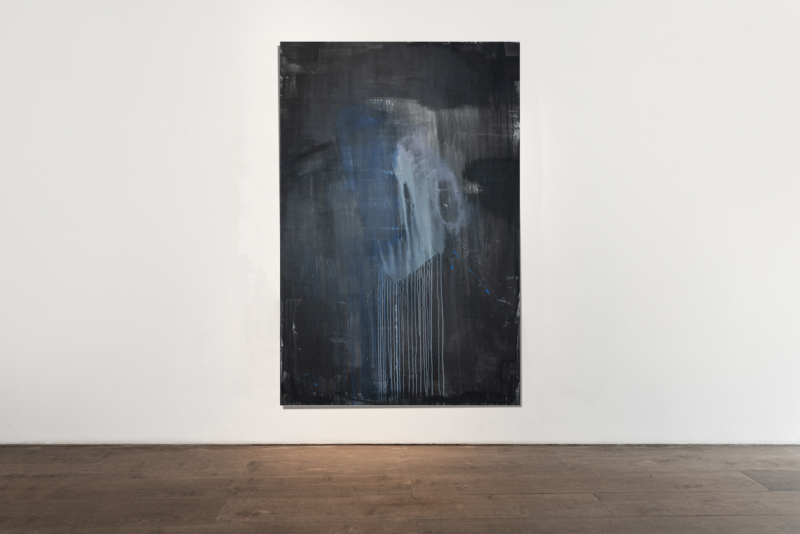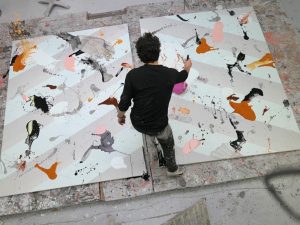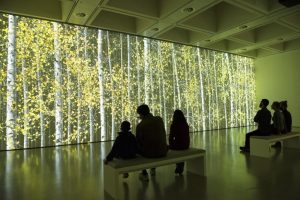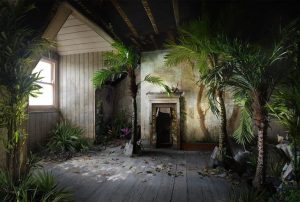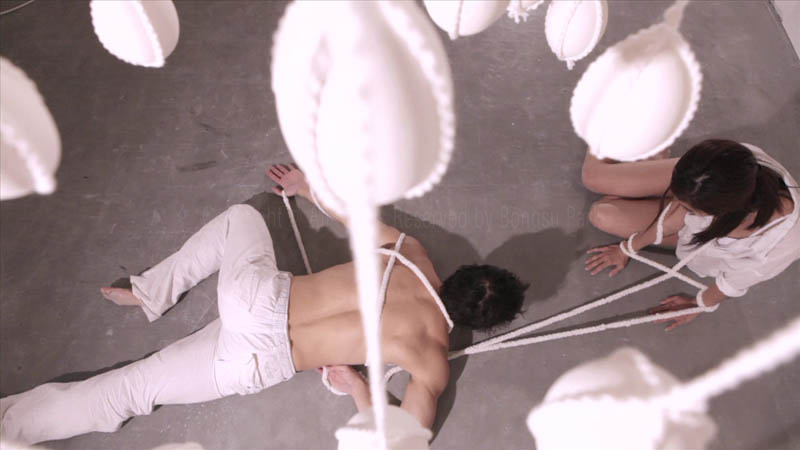
Cube performance, 2011 video still
Read Tabish Khan HERE and David Gryn HERE
The previous texts by Tabish and David Gryn expose multiple aspects of video art such as it’s linear interaction with the viewer, market value and preconceived notions associated to a moving image. The current text will further elaborate on the latter topic and explore video art’s need for a unique language.
The boom of video art can be traced directly to the emergence of the digital camera and as a consequence an immediate democratisation of filmmaking. It suddenly became possible for any budding filmmaker to give vent to his creativity without any of the enormous expenses traditionally associated with the medium; the only thing needed was a good quality video camera and a film could virtually be made. Furthermore, the explosion of short films and possibility of working within any time frame resulted in a totally new and extremely concise way for people to express themselves.
As with the dawn of photography, when nearly all photographers were aping a kind of representative painting which had already been surpassed by the avant-garde, video artists appeared to be in reality bad filmmakers; few managed to develop an autonomous language, either narratively or formally. Now, some years later, the best video artists have successfully found their own individual voices, which are peculiar to their work and most importantly do not resemble film or commonly accepted television traditions. This still remains the greatest challenge for contemporary video makers, how to develop an original voice peculiar to the medium.
Amongst the many hundreds, if not thousands, of video makers who proliferate in the contemporary scene, there are increasing examples of artists who have managed to avoid these huge creative potholes and found a totally original way of using the form. Korean multidisciplinary artist Bongsu Park, whom we work with at rosenfeld porcini, produces videos, which explore dance and sculpture
contemporaneously. She collaborates with choreographers creating intricate compositions where movement is narrated through space, sound and image. However this exploration is given an added complexity by using sculpture within the set and playing with multiple video screens. In CUBE performance (2011) Park uses two screens positioned alongside each other: one is filled with a sculptural installation composed of white square boxes suspended in space, whilst the other, in an identical white setting, features two performers enacting a richly choreographed dance. The dancers interact exploring the tensions between themselves and their surroundings; a white cubic box is continuously exchanged between them, which mirrors their attraction and repulsion being enacted in front of us. Bongsu Park’s desire to dissect and rethink the formal and abstract lines in human cycles and interactions creates a narrative where the dancers oscillate between solitude and moments of perfect symbiosis. Her piece comments on the perennial tension that is at the core of all human relationships, the need for union and for solitude.
Hopefully, my brief description has illustrated that notwithstanding the very strong aesthetic, we are dealing here with neither film nor television, but something very specific, which for want of a better term is called video art. The commercial mixing of art forms today is one of the great limits of the contemporary cultural scene; books become films; songs evolve into theatre pieces. Voices become muddled. The cross fertilisation of art forms is a given in our world but artistic languages must remain distinct. Video makers, using the same tools as in film and television, need to forge a distinctive path for themselves in today’s contemporary art scene. The challenge is, with all the obvious differences between one artist to another, to create an art form that speaks through its own unique language and, which is completely different from the above-mentioned pre-existing mediums.
Watch Bongsu Park’s video below:
CORD (2011) dance video, 4mins 24sec, 5 editions, 1 artist proof from Rosenfeld Porcini on Vimeo.
